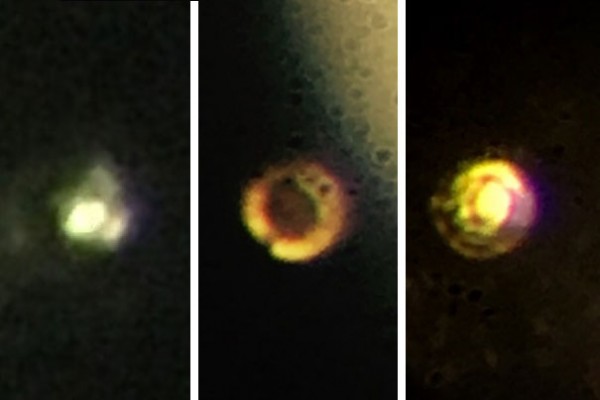By Ana Verayo, | January 28, 2017

Microscopic images of the stages in the creation of atomic molecular hydrogen: Transparent molecular hydrogen (left) at about 200 GPa, which is converted into black molecular hydrogen, and finally reflective atomic metallic hydrogen at 495 GPa.
Scientists claim they have successfully formed hydrogen into metal which is an elusive feat fueling numerous attempts in the past century. However, some experts say that this new discovery was a crucial mistake.
Scientists have been trying to crush hydrogen into metal with alchemical processes which can herald revolutionary spaceflight technology and is considered to be one of the most important scientific breakthroughs in mankind.
Like Us on Facebook
Now, two physicists from Harvard University, Ranga Dias and Isaac Silvera claim to have mistaken this crushed hydrogen as metal and experts were quick to refute and debunk their new discovery.
When the Harvard scientists posted their research last October in a scientific database, it attracted many critics, saying that this discovery is mistaken for something else.
However, their research was published in a scientific journal this week despite backlash from experts revealing evidence that this discovery is based on an error, according to another scientific journal. According to physicist Paul Loubeyre, from the Atomic Energy Commission in Bruyères-le-Châtel in Frace, this paper is not convincing at all.
Now, Loubeyre and other scientists are eager debunk that this crushed hydrogen indeed turned into metal. Skeptical scientists have crushed tiny bits of hydrogen under anvils made from diamonds to exert more pressure and to simulate the crushing forces found inside the core of the Earth. There is limited progress with this research however, nobody has attempted or even produced a shiny metal from this process.
Loubeyre explains, if they want to convince us, they will have to redo the measurements and the evolution of pressure. When they can show this pressure range, the alumina is not becoming metallic. The Harvard scientists apparently cannot show off this evidence of hydrogen metal since they claim it was stuck as remnants in between the diamond anvil. Instead, they say that by removing this hydrogen metal they found under the anvil, this can cause their discovery to disappear.
Harvard scientist Isaac Silvera is convinced that this material crushed in the anvil is metallic hydrogen. He describes the material they produced as something "so shiny you can only believe it is metal" as seen under microscopic views.
Other scientists say that shiny material does not always mean it is metal in origin. This can also be an entirely different material such as aluminum oxide which is common to coat diamonds in an anvil that grows shiny under high pressures, through time.
Scientists were also keen to point out that the paper did not reveal any detailed measurements of the entire process like how much pressure was forced onto the hydrogen material.
Skepticism aside, the Harvard scientists still say that their "breakthrough event" is only the firs step in developing hydrogen metal and further research and experiments are needed to shed more light.
This new study was published in the journal, Science.
-
Use of Coronavirus Pandemic Drones Raises Privacy Concerns: Drones Spread Fear, Local Officials Say

-
Coronavirus Hampers The Delivery Of Lockheed Martin F-35 Stealth Fighters For 2020

-
Instagram Speeds Up Plans to Add Account Memorialization Feature Due to COVID-19 Deaths

-
NASA: Perseverance Plans to Bring 'Mars Rock' to Earth in 2031

-
600 Dead And 3,000 In The Hospital as Iranians Believed Drinking High-Concentrations of Alcohol Can Cure The Coronavirus

-
600 Dead And 3,000 In The Hospital as Iranians Believed Drinking High-Concentrations of Alcohol Can Cure The Coronavirus

-
COVID-19: Doctors, Nurses Use Virtual Reality to Learn New Skills in Treating Coronavirus Patients







